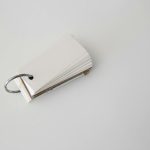To digitize your bulletin board notes, start by assessing what's relevant and removing outdated items. Gather tools like a smartphone or scanner for capturing images. Choose a digital format that suits you, then take high-quality photos of your notes. Organize files logically with clear naming conventions, and set up a backup system to protect your data. Finally, share your notes easily with others. Keep going to discover more tips on streamlining this process!
Table of Contents
Key Takeaways
- Evaluate and categorize bulletin board contents, removing outdated items and noting those needing updates for effective digitization.
- Use a smartphone or scanner to capture high-quality images of notes, ensuring proper lighting and camera positioning.
- Organize digital files with clear naming conventions and a logical folder structure for easy retrieval and management.
- Utilize tags and keywords to streamline the search process for specific information, enhancing efficiency and productivity.
- Create shared folders for centralized access to updated notes, fostering collaboration and collective input from team members.
Assess Your Bulletin Board Contents
Before you dive into digitizing your bulletin board notes, it's essential to assess what you've got pinned up. Start by taking a good look at each item. Are they still relevant or useful? Check for outdated information, such as old event flyers or expired promotions. You don't want to waste time digitizing things that no longer serve a purpose.
Next, categorize your notes. Group similar items together, like announcements, reminders, or creative ideas. This'll help streamline your digitization process later. Make note of anything that needs to be updated or rewritten.
Lastly, consider the format you want to use for your digital notes, as this'll guide your choices while assessing. Once you've evaluated everything, you'll be ready to move on!
Gather the Necessary Tools
To get started with digitizing your bulletin board notes, you'll need a few essential tools. First, grab a smartphone or a digital camera; these will help you capture clear images of your notes.
Next, invest in a good scanner if you prefer scanning over photographing. You'll also want a reliable computer or tablet for organizing and editing your digital files.
Make sure you have access to a cloud storage service or external hard drive for backups. Additionally, consider downloading note-taking software or an app to help you categorize and manage your digitized notes effectively.
With these tools in hand, you'll be well on your way to transforming your bulletin board notes into a more accessible digital format.
Choose a Digital Format
How do you want your digitized notes to be organized? Choosing a digital format is crucial for easy access and management. You might prefer a simple text document, a spreadsheet for sorting, or even a note-taking app for more features. Consider how you'll use these notes later.
Here's a quick comparison to help you decide:
| Format | Advantages |
|---|---|
| Text Document | Easy to create, edit |
| Spreadsheet | Sortable, organized |
| Note-taking App | Accessible, feature-rich |
| Cloud Storage | Backup, shareable |
Each option has its strengths, so think about what works best for you. Once you pick a format, you'll be one step closer to a streamlined digital experience!
Capture High-Quality Images
Capturing high-quality images of your bulletin board notes is essential for accurate digitization. Start by using a good camera or smartphone with a high-resolution setting.
Ensure you have adequate lighting; natural light works best, but avoid harsh direct sunlight, which can cause glare. Position your camera directly above the notes to minimize distortion and ensure a clear shot.
Keep the lens clean to avoid blurry images. If your notes are pinned, consider removing them for a flat shot.
After capturing the images, check for any shadows or inconsistencies that may obscure text. Take multiple shots if needed, so you have options.
This attention to detail will help you create a reliable digital archive of your important notes.
Organize Your Digital Files
Once you've captured your images, it's crucial to organize your digital files effectively.
Use clear file naming conventions and a logical folder structure to make retrieval easy.
This will save you time and keep your notes accessible whenever you need them.
File Naming Conventions
While organizing your digital files, establishing effective file naming conventions is crucial for easy access and retrieval. Start by using clear and descriptive names that reflect the content of each file.
Include dates in a consistent format, like YYYY-MM-DD, to help you track versions chronologically. You might also want to add keywords relevant to the subject matter, making it easier to search for specific files later.
Avoid using special characters or spaces, as these can cause issues across different systems. Instead, use underscores or hyphens to separate words.
Lastly, keep file names concise—around 30 characters is ideal. By following these guidelines, you'll create a streamlined system that enhances your productivity and saves you time.
Folder Structure Organization
Creating a well-organized folder structure is essential for managing your digital files efficiently. A clear system helps you locate important notes quickly and keeps your workspace clutter-free.
Here are some tips to consider when setting up your folders:
- Main Categories: Start with broad categories, like "Projects," "Meeting Notes," or "Research."
- Subfolders: Within each category, create subfolders for specific topics or dates to further organize your files.
- Consistency: Use consistent naming conventions and structures across all folders so you can navigate easily.
Implement a Backup System
To protect your digitized bulletin board notes, you need a solid backup system.
Start by choosing a backup method that suits your needs, whether it's external drives or cloud storage.
Don't forget to schedule regular updates to keep your files safe and accessible.
Choose Backup Method
How can you ensure your digitized notes are safe and accessible?
Choosing the right backup method is crucial for protecting your valuable information. Here are three effective options to consider:
- Cloud Storage: Utilize services like Google Drive or Dropbox for automatic syncing and easy access from any device.
- External Hard Drive: Regularly save copies of your notes on an external hard drive to keep them secure and offline.
- Email Backups: Send yourself copies of your notes via email, giving you a quick way to retrieve them if needed.
Schedule Regular Updates
Backing up your notes is just the first step; keeping them current is equally important. To ensure your digitized notes remain relevant, schedule regular updates. Set aside time weekly or monthly to review and refresh your content. This practice prevents information overload and keeps your materials organized.
Here's a simple schedule you can use:
| Frequency | Action | Notes |
|---|---|---|
| Weekly | Review recent additions | Check for relevance |
| Monthly | Archive outdated notes | Keep the best content |
| Quarterly | Reassess categories | Adjust as needed |
| Biannually | Evaluate overall structure | Ensure clarity |
| Annually | Backup all digitized notes | Protect your data |
Use Cloud Storage
Using cloud storage is a smart way to implement a reliable backup system for your digitized bulletin board notes. By saving your notes in the cloud, you ensure they're secure and accessible from anywhere.
Plus, cloud storage often includes automatic backup features, so you won't have to worry about losing your data.
Here are some benefits of using cloud storage:
- Accessibility: Access your notes anytime, anywhere, on any device.
- Collaboration: Share notes easily with team members or classmates.
- Automatic backups: Keep your information safe without manual effort.
Embracing cloud storage not only protects your notes but also enhances how you interact with them.
Don't miss out on the convenience it offers!
Share and Access Your Notes Easily
Although you may have valuable notes pinned to your bulletin board, sharing and accessing them doesn't have to be a hassle.
Once you've digitized your notes, you can easily share them with friends or colleagues through email or messaging apps. Use apps like Google Drive or Dropbox to store your notes, allowing others to view or collaborate in real-time.
Organize your notes in folders for quick access, and don't forget to use tags or keywords to make searching a breeze.
For added convenience, consider creating a shared folder where everyone can contribute and access relevant information. This way, you'll stay organized and ensure everyone's on the same page without the clutter of paper notes.
Frequently Asked Questions
Can I Digitize Notes From a Whiteboard or Chalkboard?
Yes, you can definitely digitize notes from a whiteboard or chalkboard. Use a smartphone or camera to take clear photos, or try scanning apps that convert images into editable text for easier access and organization.
What Software Is Best for Organizing Digital Notes?
For organizing digital notes, consider apps like Notion for versatility, Evernote for simplicity, or OneNote for integration with Microsoft tools. Each offers unique features to help you keep your notes structured and easily accessible.
How Do I Ensure My Images Are High Resolution?
To ensure your images are high resolution, always use a camera with a high megapixel count. When saving, choose formats like PNG or TIFF, and avoid excessive compression that can degrade quality. Always check your settings!
Can I Use My Smartphone for Capturing Images?
Yes, you can definitely use your smartphone for capturing images. Just make sure to adjust the settings for high resolution, and try to take the pictures in good lighting for the best results.
What File Formats Are Best for Sharing Notes?
When sharing notes, you'll want to use formats like PDF for easy access and consistent formatting, or JPEG/PNG for images. These options ensure everyone can view your notes without compatibility issues or losing quality.




